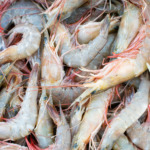
I show you how to deshell and devein raw and fresh shrimp. This applies to small and large ones. You won't need special kitchen tools for this.
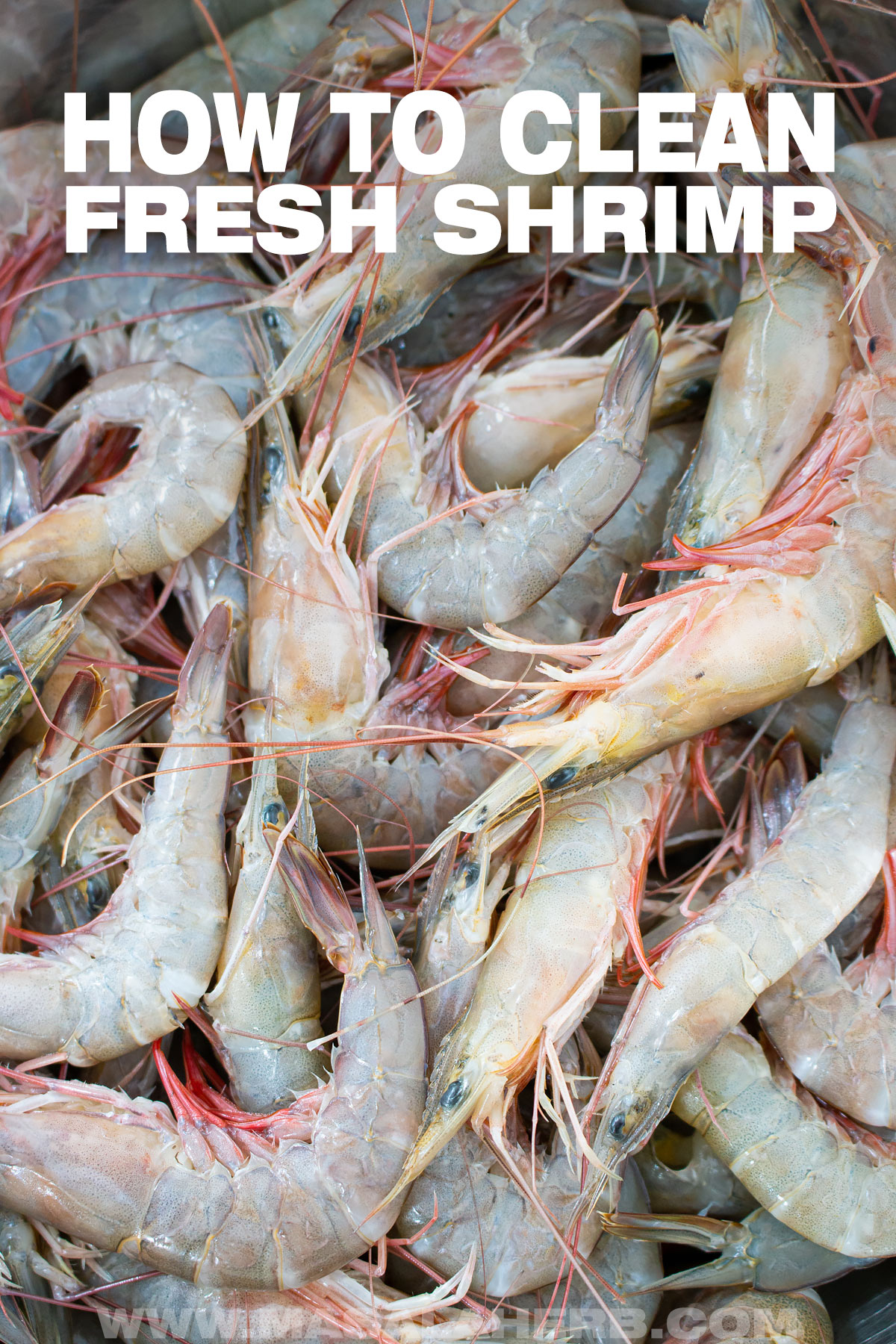
Jump to:
🔪 Why clean shrimp?
Shrimp need to be cleaned for food safety reasons and because the shell isn't edible.
When someone says they are cleaning a shrimp (or prawn), they mean to say that they are removing the head, shell, the tail, and the intestines.
Some people leave on the tail for presentation, but you should only do that if you intend to serve up shrimp cocktail. That way, the shrimp can be picked up by the tail and dipped.
The intestines are visible as they appear black, yellow, green or also transparent. It all depends on the last meal of your shrimp.
These “black lines” are on the back of the shrimp and the second one, located on the stomach, is less visible and transparent.
🦐 How to clean your shrimp?
This is the best way to devein shrimp, and it's my hack (if you want to call it that).
Here is an overview of the deshelling and deveiling process. You will find more details with how to video further below in the recipe card.
Step 1 — removing the head
Break off the shrimp head.
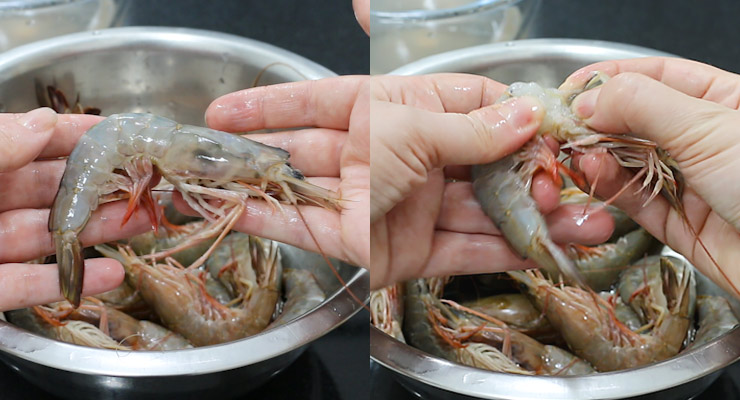
Step 2 — deshelling procedure
Break open the softer underside of the shrimp shell and remove it. The hard outer shell will come off easier that way.
Pull off the tail. (can be left on for cocktail dippers)
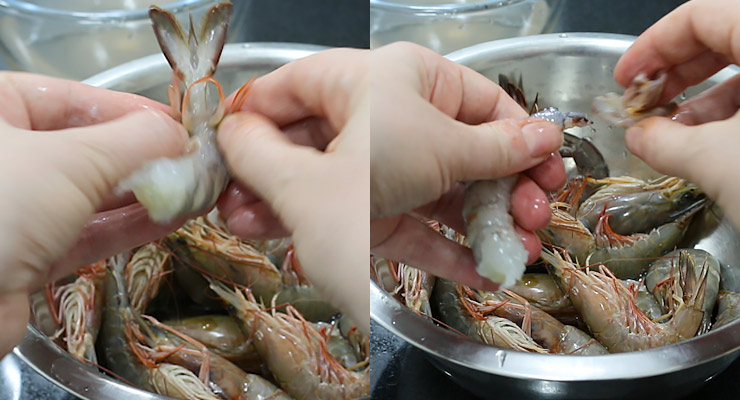
Step 3 — deveining process
Slit along the dark vein on the back with a small pairing knife, from head to tail. A shallow cut will be enough.
Pick out the dark line, which is the digestive tract. I use my thumb and index finger to pinch and pull it out or the tip of my knife or a toothpick if it doesn't come out straightaway.
The stomach may also have a transparent line, which you may remove if you see one (not all shrimp have it)
Repeat the process with all shrimp. Rinse them at the end with some fresh water.

💡 Tips
- Cleaning fresh shrimp can be time-consuming, so plan in enough time for this task.
- Use a small, sharp pairing knife to take out the veins. A fork or toothpick are also an option, but I think they slow one down, and I, personally, prefer the pointy knife because you have to slit into the back of the shrimp.
- Keep a bowl of ice water with lemon juice at the side to wash your hands. The lemon gets rid of the fishy smell.
- I also keep paper towel at the side to clean my knife every so often.
- The fresher the shrimp, the less your seafood will smell.
- Remove the tail. The tail is only needed if you intend to use the shrimp as a dipper. I know some recipes online show shrimp with a tail on, but that's just for pretty pictures.
- Use your shrimp heads, shell, and the tails to make a shrimp seafood stock. When deshelling, separate the veins from the shells and head. You don't want the veins in your stock! #zerowaste
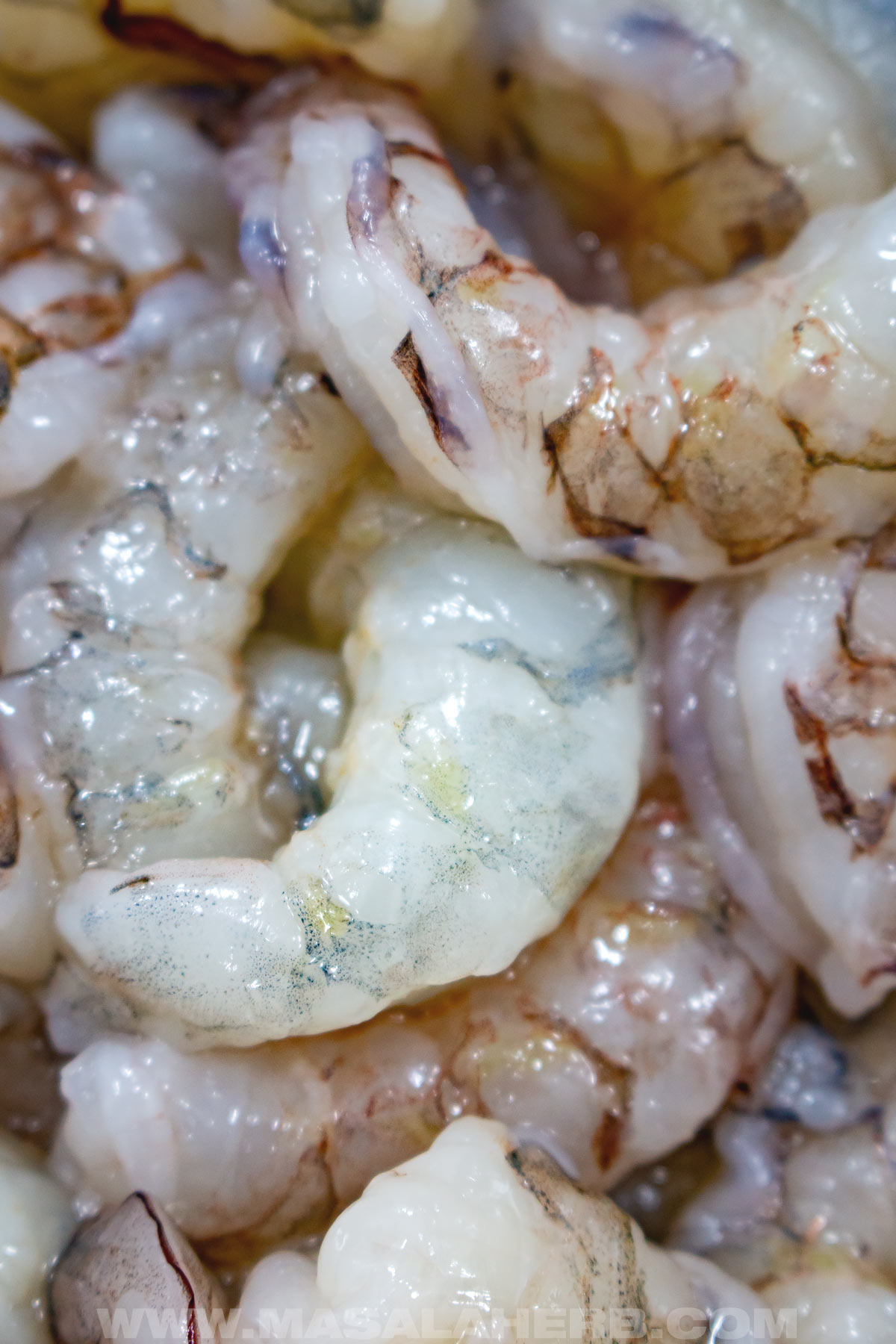
📖 Recipe
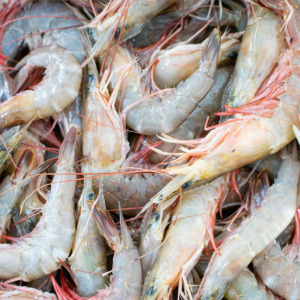
Instructions
- Take a shrimp into your hand and break off the head.1 pound Shrimp
- With your fingers, open up the shell, starting from the inner stomach/leg area where the shell is the thinnest. Take off the shell with the legs.
- Decide if you want to keep the tail on or not, it's only needed if you want to use the shrimp as a dipper. The tail should be removed if you plan on sauteeing your shrimp or cooking them in a sauce or curry. Simply pull off the tail or break off.
- With a small pointy knife (aka paring knife), lightly cut into the shrimp back along the dark vein. From top till down.
- Take out the shrimp vein and discard.
- Repeat the process with all the other shrimp.
- Rinse the shrimp and remove excess water.
- Use them up or store them in batches. Keep them in zip lock bags, that way you can freeze and thaw them as needed.
Equipment
- 3.5" Paring Knife
🍱 Storing
Fresh, clean peeled shrimp are good for up to one day in your refrigerator.
Using up your shrimp right after deshelling and deveining them is definitely the way to go, but it can't hurt to have a batch in your freezer.
Normally, getting the fresh and best shrimp means buying a bigger bulk or quantity of shrimp. Because the best shrimp are a commodity!
You want to clean them once in one go because who's got time to do that again and again, right?
So you clean your lovely catch of fresh and raw shrimp, and then you store them in batches in your freezer.
I use zip lock bags for that.
Just place the servings that you would use for a meal into a zip lock bag. For example, we are usually 2, so I will place enough shrimp into one bag to prepare a dish for two.
Some recipes call for more, and some for fewer shrimp than others. For example, a butter-sauteed shrimp meal calls for more shrimp than say a shrimp louie salad.
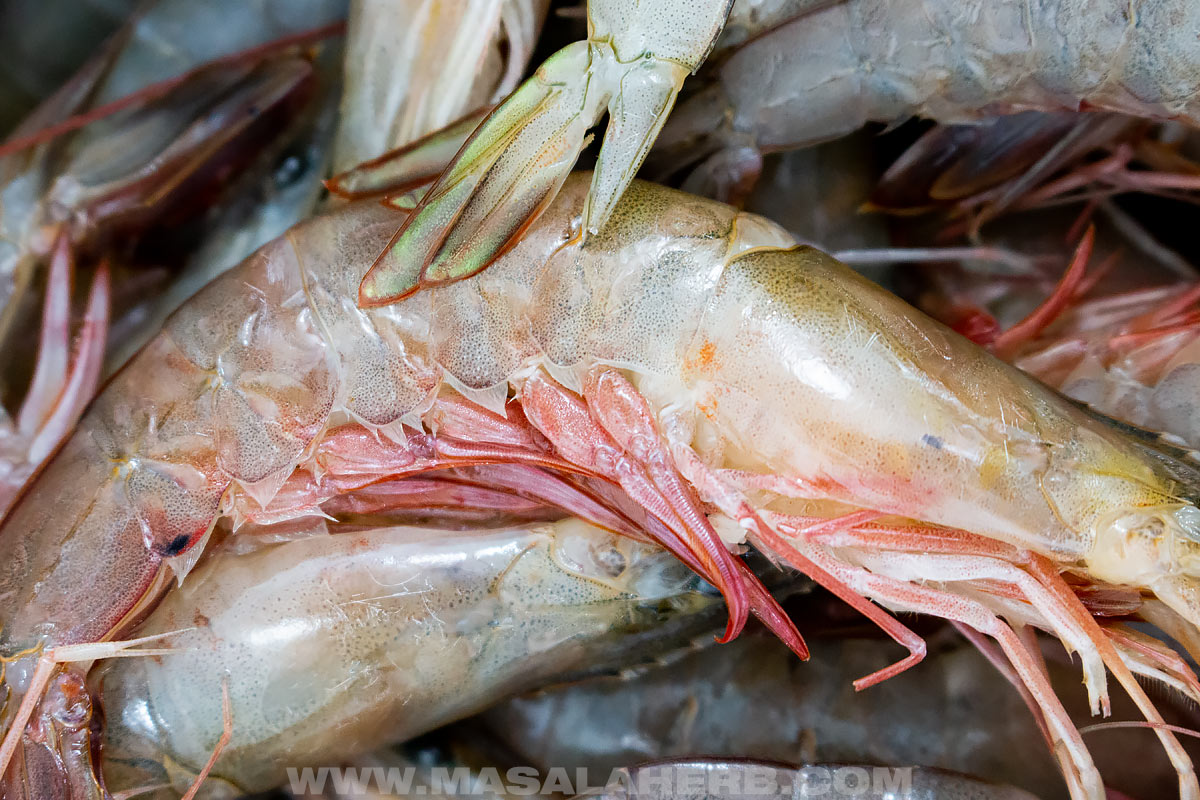
💭 FAQs
Shrimp have two veins, the one on the back and the one on the bottom. The transparent one on the underside is almost not visible, and it doesn't really matter whether you remove it or not. Most people leave it, and many don't even know it exists.
The top black/green/brown vein is the one that you have to remove because that's the intestine of the shrimp. It's the stuff that the shrimp has digested, it's the poop and it's sandy. If you eat your shrimp raw, as in a cocktail, you must remove it, or else the harmful bacteria might cause loose motion. If the shrimp is cooked with the vein in, you won't get sick because the heat kills off the bacteria in the vein. That said, there is a set of people, including Paul, who get an allergic reaction from the shrimp vein when consumed. That mainly happens with large shrimp and not so much with the small shrimp. In doubt, simply devein your shrimp.
Most do, but not all. If you ever see a black vein in a shrimp, that's when you know that they didn't devein their shrimp. I wouldn't trust that restaurant with handling my food!
Yes, frozen shrimp come already cleaned and deveined. Never ever freeze whole unshelled shrimp because they will take a while to thaw and the shrimp will lose some of their beautiful texture.
A shrimp is deveined when the back is cut open and, usually, the dark line (intestine vein) is missing. The shrimp curls up instantly with heat when sautéed or fried.
Yes, you can use this shrimp deveiner tool if you want.
Commercial frozen shrimp are not fresh and typically come from large farms from unknown origins. I.e., most frozen shrimp in Europe come from Vietnam. I don't recommend buying and using frozen shrimp, the quality is not comparable to fresh shrimp.
Technically speaking, shrimp and prawns are two different varieties of crustaceans that are related to each other. One is more common in freshwater, the other in saltwater and there are shrimp varieties as well, (i.e. black tiger prawn). BUT Americans, and most of the world, call them shrimp. The UK, and former colonies such as India, call them prawns. So, nobody really cares which they are eating, the names that are used locally are more prevalent.
Get shrimp that are not too big (jumbo shrimp are not that flavorful) and if you want to save your sanity, avoid small shrimp. The smaller they are, the more work to clean them.
Yes, you can remove the intestinal tract with the flesh shell on, but it's tedious, and you may require a special shrimp deveining tool because you will have to pull it out. That said, the vein might break off when pulling it out and some may get stuck in the shrimp. Restaurants leave the shells on the shrimp and prawn for presentation, and that's the only reason why you might want to attempt this.
👁️ Recipes to use your clean shrimp
- Coconut milk shrimp curry
- Sautéed spiced cilantro lime shrimp
- Spicy shrimp stir-fry
- Shrimp fried rice
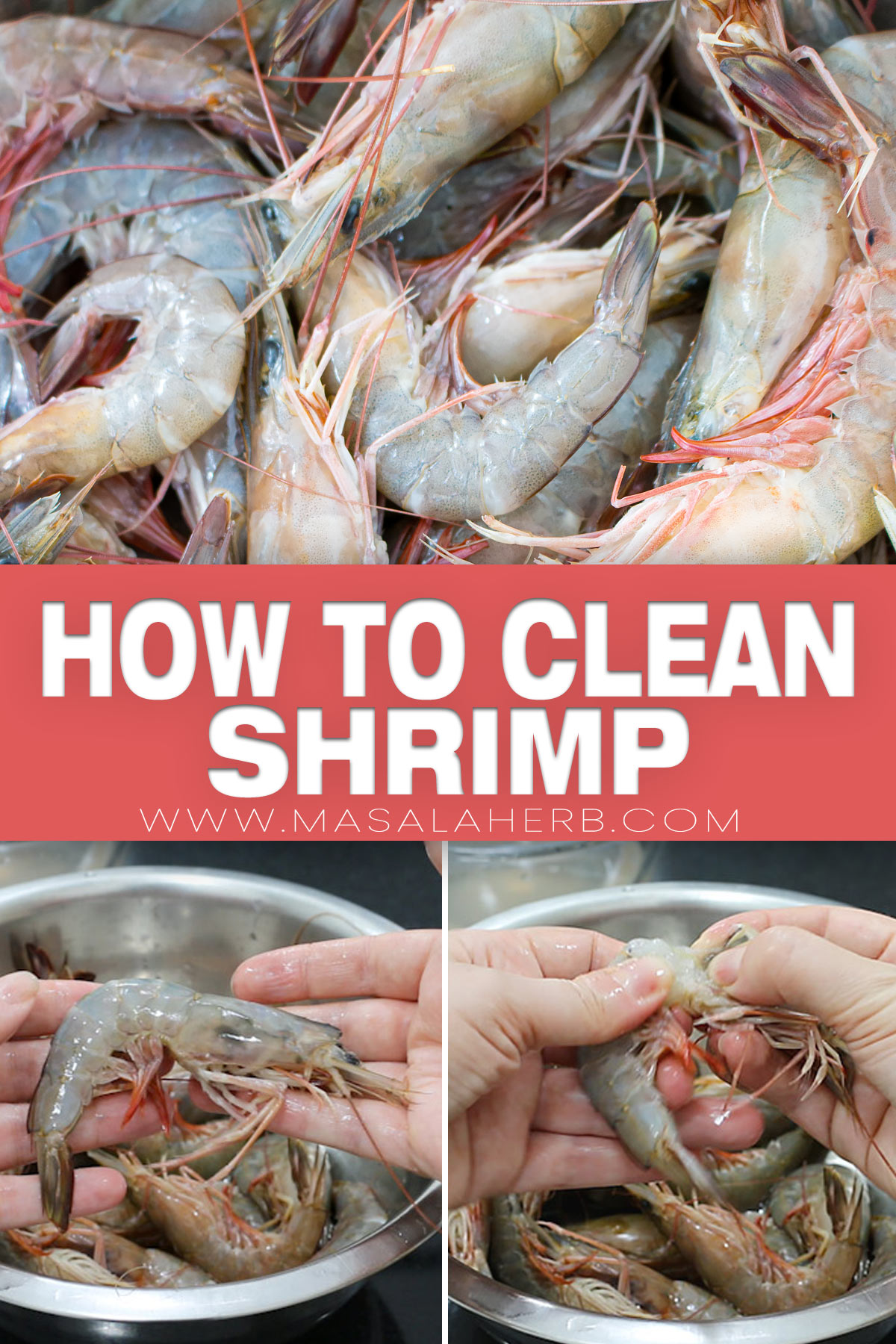
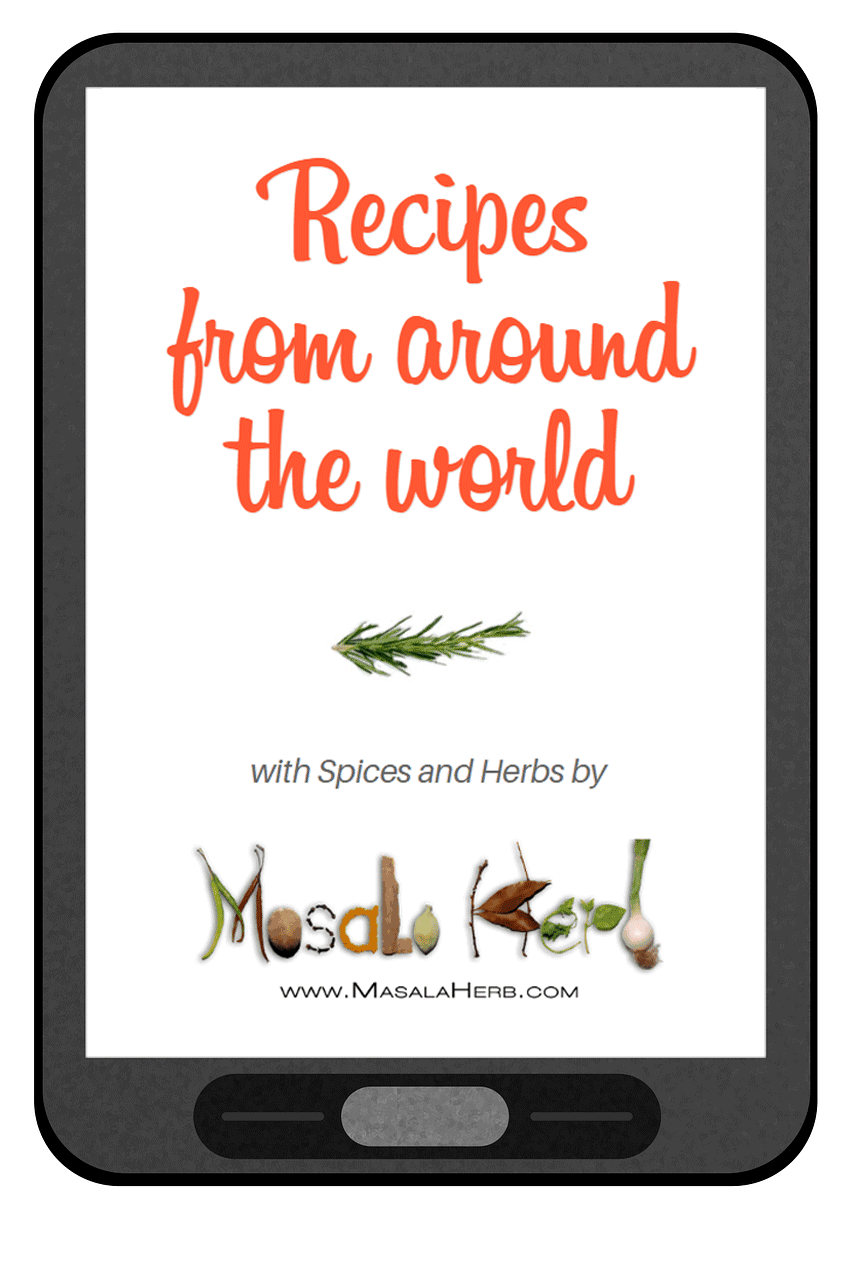
Global Food Recipes
with Spices and Herbs
Free E-Book available for a limited time. Grab yours now and get instantly inspired!
You missed out!

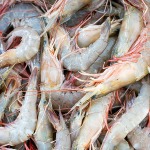
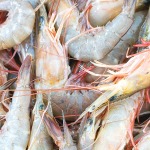
Comments
No Comments